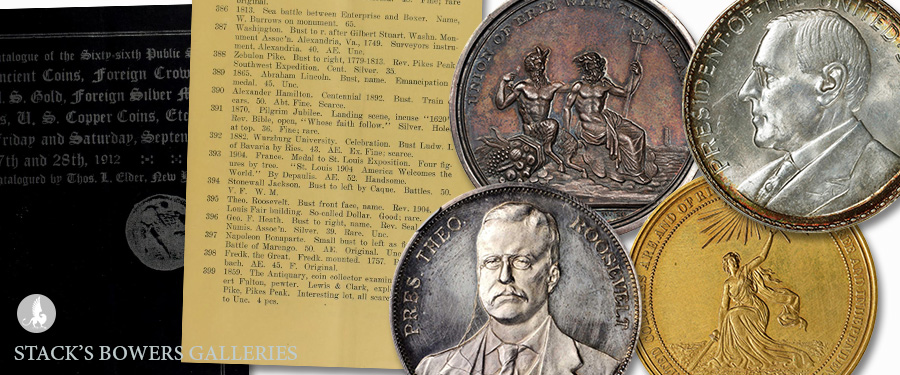
In 1912, Pennsylvania coin dealer Thomas Elder used a term to describe medals issued commemorating the 1904 Louisiana Purchase; this name would prove enduring. The description for lot 395 of Elder’s September 27-28, 1912, sale reads “Theo. Roosevelt. Bust front face, name. rev. 1904. St. Louis Fair building. So-called Dollar. Good; rare.” Over succeeding decades, the term gradually evolved, becoming a catch-all term for relatively low-relief, silver dollar-size commemorative medals produced and issued from the early 19th century to the mid-20th and beyond. So-Called Dollar experts point to Elder’s 1912 catalog as the first published usage of the term, which was in common numismatic/exonumic parlance by the mid-20th century.
Elder, who outside of his numismatic work was a court stenographer and telegrapher, was a fixture of early 20th century U.S. numismatics. A lifelong collector and prolific cataloger, he conducted his first sale in 1905 and was a member of several prominent numismatic associations. Elder also produced more than 100 medals over the course of his career. He made sporadic attempts at periodical publishing in the late 1900s and early 1910s and published Elder Rare Coin Book in 1934.
Interested readers can learn more about Elder at this page on the American Numismatic Society’s website: https://numismatics.org/authority/elder
Material eventually included under the umbrella term So-Called Dollars predates the coining of the term by nearly a century. Medals commemorating the completion of the Erie Canal in 1826 are generally the first recognized So-Called Dollars. Medals that could plausibly be described as So-Called Dollars (including examples using original dies, such as the 2020 centennial restrikes of the 1920 Manila Mint medals) – are still being produced, though many collectors generally focus on older issues.





